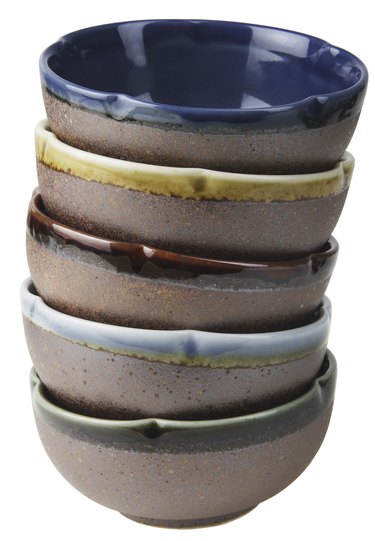
Painting on unglazed plain ceramics is a commonly performed craft project requiring latex or enamel paints. These ceramics are then glazed and fired in an oven or kiln to increase the longevity of the finish. Painting over already-fired ceramics sounds more complicated as the glaze naturally resists new layers. To paint over or restore painted, glazed and fired ceramics, various steps need to be completed.
The Glaze
Video of the Day
To paint over a fired piece of ceramic the old glaze must first be removed. The best way to do this is with some fine grit sandpaper. Rub the area to be repainted lightly with the sandpaper to remove the top layer of glaze. Do not rub too hard as this will damage the ceramic itself. Clean the area with some pure alcohol on a lint-free cloth to remove the dust, dirt and grease.
Video of the Day
Priming
An undercoat or primer layer is essential when painting anything, as this helps bind the paint to the material. Any ceramic primer is suitable for this and can be applied in broad stokes with a large paint brush or with a detailing brush for smaller restorations. Ensure that all the brush strokes go in the same direction and that the primer layer is not too thick.
Painting
Use oil-based ceramic paints or a ceramic paint designed for use on fired ceramics. Although the top layer of the glaze has been taken off, the remaining glaze will resist the application of new paint. Apply the paint as normal using a brush and layer up the paint in thin layers to get the best effect. Make sure all brush strokes go the same way.
Reglaze and Fire
Once the paint has been allowed to dry, apply several layers of glaze over the repainted area and fire in an oven or kiln. Paint on thin layers of glaze, allowing each one to dry before applying the next. The firing instructions depend entirely on the brand of paint and glaze used. Firing is not necessary, but will ensure the paint lasts longer.